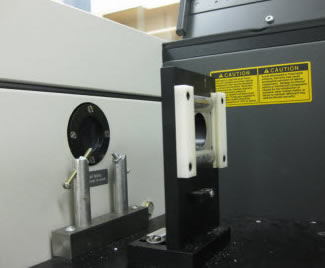As you saw in the Learning Tool on the previous page, when CFC molecules absorb IR radiation, the molecules bend and stretch more noticeably. Along with CFCs, many other molecules absorb IR radiation.

Chemists use a powerful analytical tool called infrared (IR) specroscopy to determine the wavelengths of IR radiation that are absorbed by a molecule. In IR spectroscopy, a beam of IR radiation is passed through a sample and the wavelengths at which the sample absorbs IR radiation are recorded. The wavelengths that are absorbed by a molecule depend on the bonds and connectivity patterns of that molecule. Because of this, substances with similar connectivity patterns will have very similar IR absorption patterns. The correlation between connectivity patterns and IR absorption enables scientists to use IR spectroscopy as a tool to help determine the molecular structure and chemical identity of an unknown substance.
The interaction between greenhouse gases and IR radiation is vital to the regulation of Earth’s radiation balance. Without the absorption of IR radiation by greenhouse gases, the temperature of Earth would be too low to sustain many of the forms of life found on our planet today, including humans.